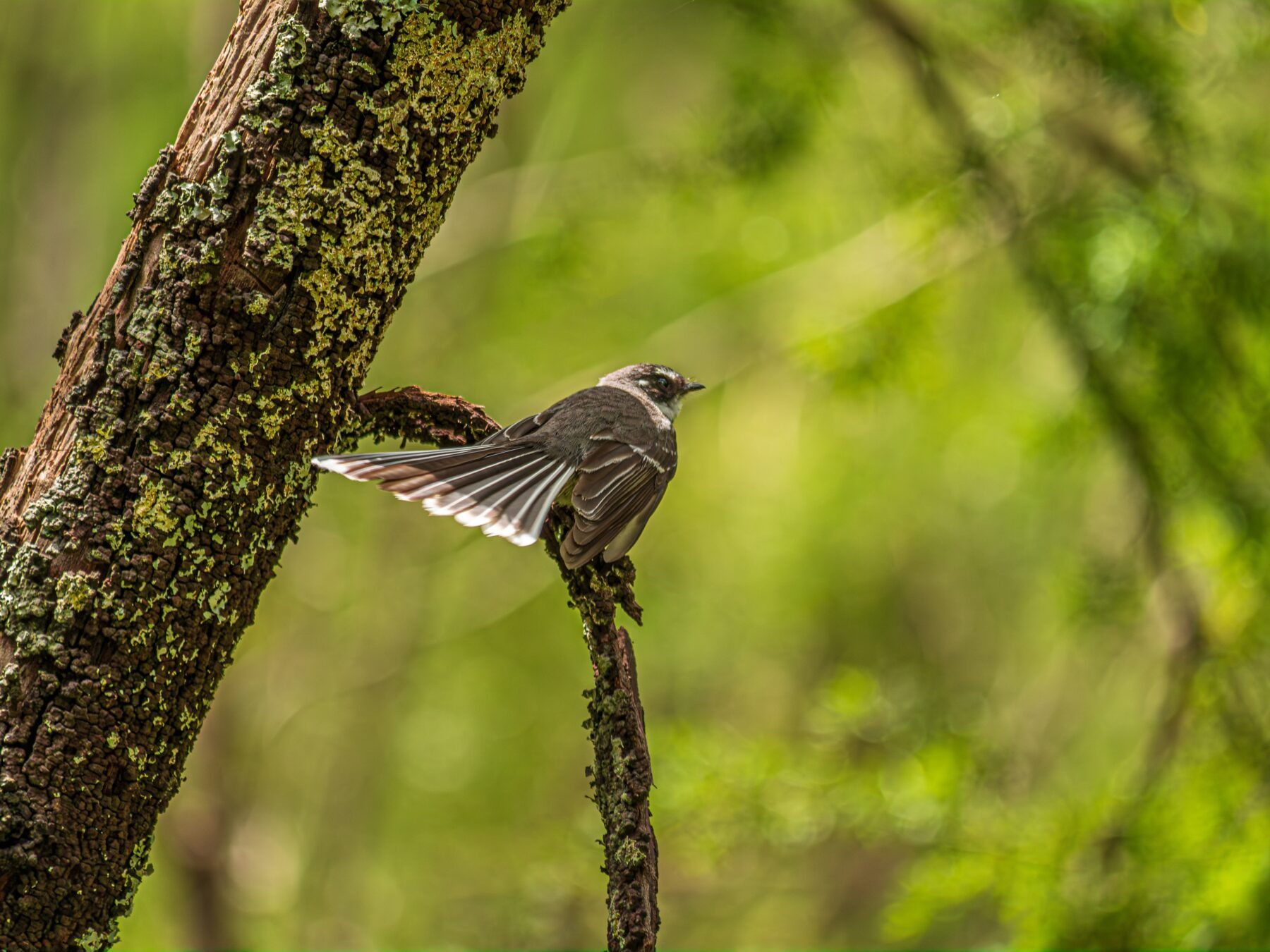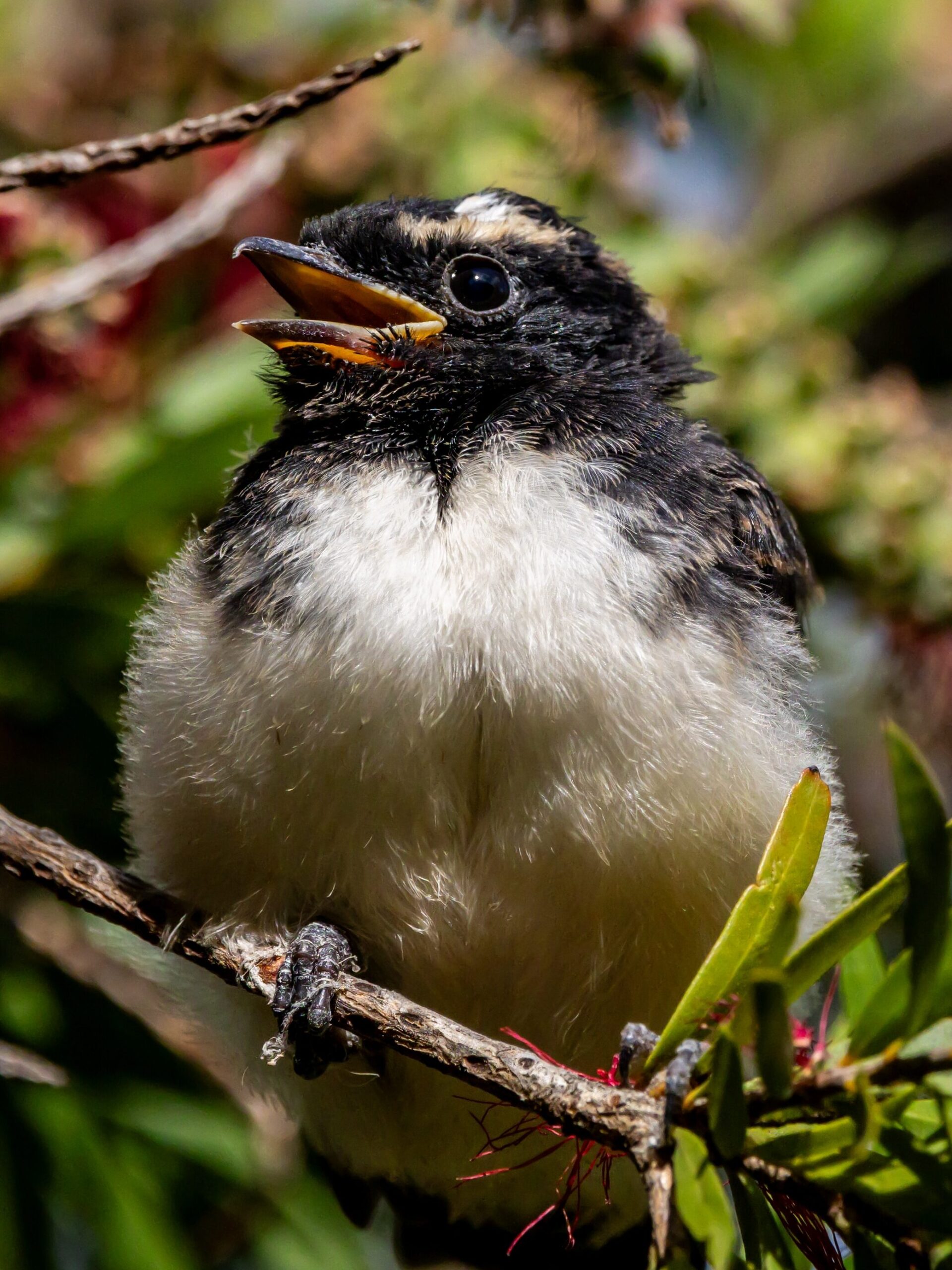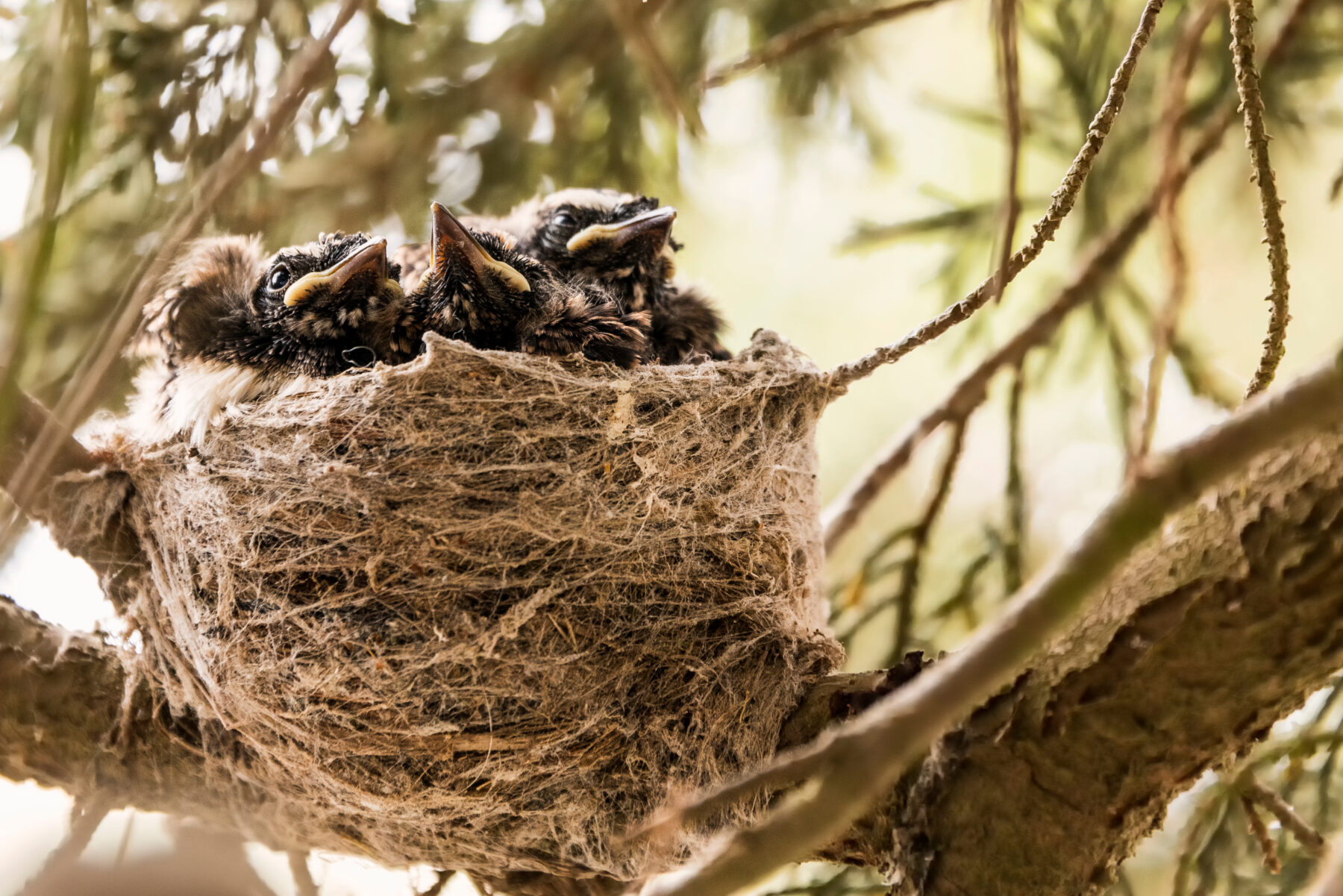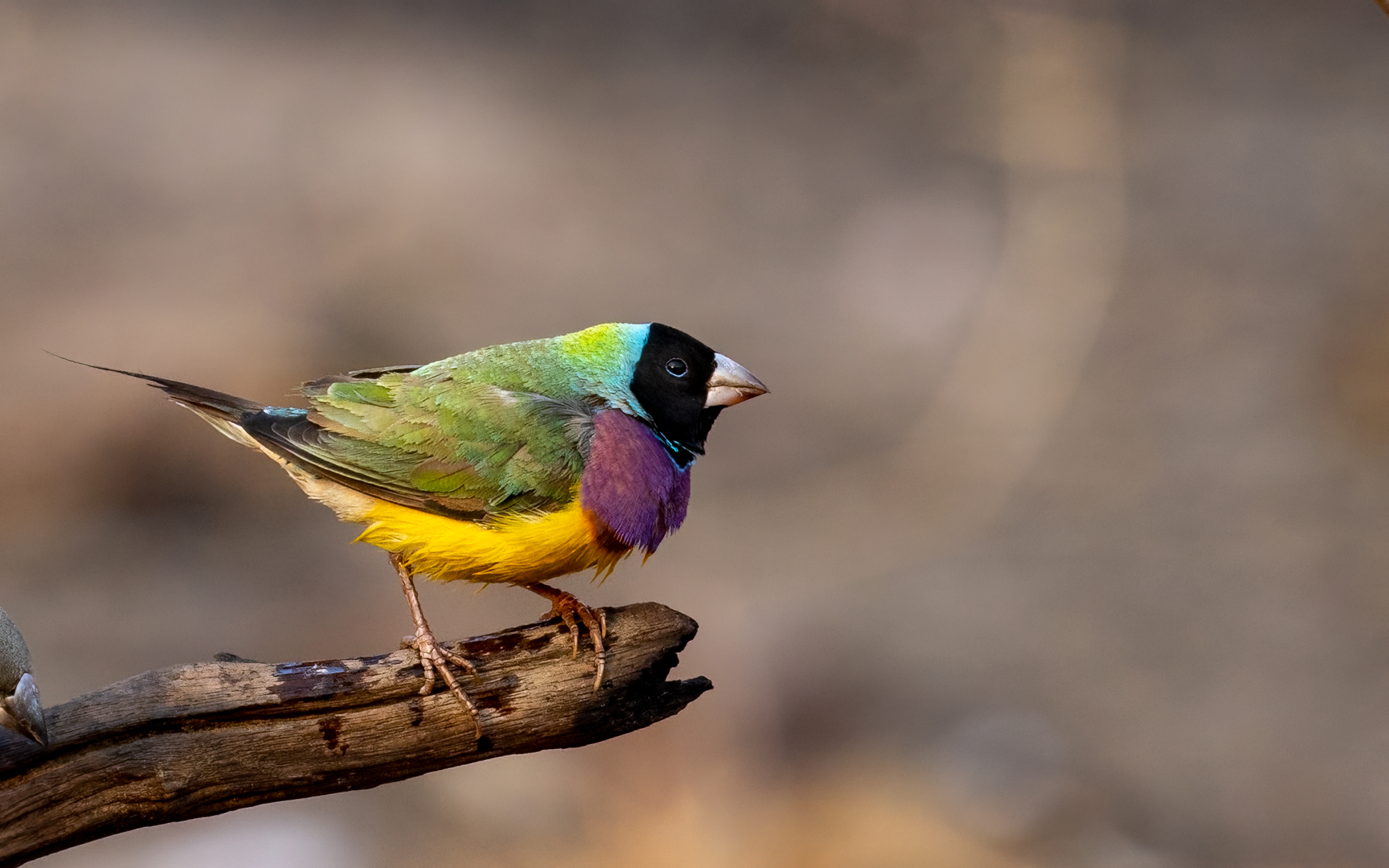| Common name | Willie wagtail |
| Scientific name | Rhipidura leucophrys |
| Type | Bird |
| Diet | Insects, sometimes small lizards |
| Average lifespan | Perhaps 15 years |
| Size | Up to 22 cm long from the bill to the end of the tail |
You rarely see this black and white bird not moving. It’s forever flitting across the ground chasing after insects and even when it stops it’s always twisting around on the lookout for prey, forever flicking its fan tail, which has given rise to its common name.

Willie wagtails are common across many areas of mainland Australia and surrounding islands, although they’re absent from Tasmania. They also occur in New Guinea and several other Pacific Islands.
They seem comfortable with people and will often approach closely. They feature often in Indigenous stories, including many in which they’re depicted as sneaky characters hanging at the fringes of campsites picking up secrets that they spread elsewhere.

Although willie wagtails are usually seen alone or in pairs, they often form family groups of adults and offspring. They are extremely territorial and will harass other birds – even those much larger than themselves, such as kookaburras and eagles – that might turn up on their home patch.
Willie wagtails have adapted well to the spread of agriculture, and you’ll often see them following cattle and other stock, picking up insects disturbed as they walk through grasses.
When breeding male willie wagtails are particularly noisy, calling repeatedly to advertise their territories, not only during the day but often also through the night.

These birds use grass to build neat cup-shaped nests that they’ll re-use year after year. Sometimes they’ll dismantle them and rebuild, recycling the same material. Inside, the nests are lined with feathers, fur, or hair, which you’ll sometimes wag tails picking straight out of the livestock they follow. On the outside these nests are covered with spider webs.
Up to four eggs are laid in a clutch and in a good year a pair can have four clutches. The young remain with their parents until the next clutch hatches, after which they’re chased away.
Scientists have labelled the willie wagtail the ‘werewolf’ of the bird world following a recent study that found they sang “in line” with the brightness of the moon.








